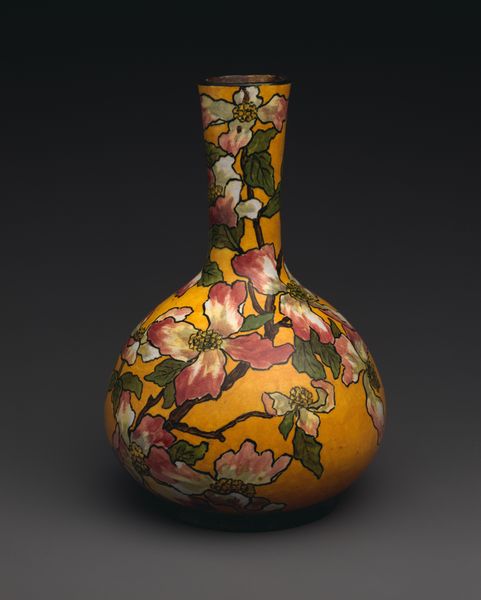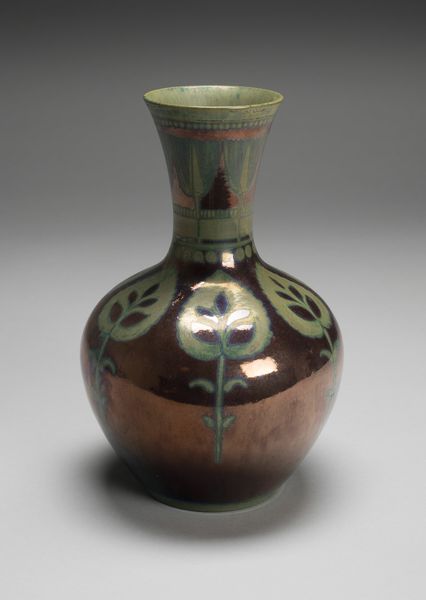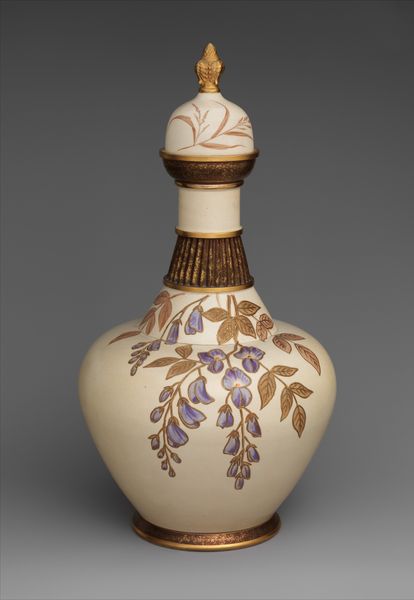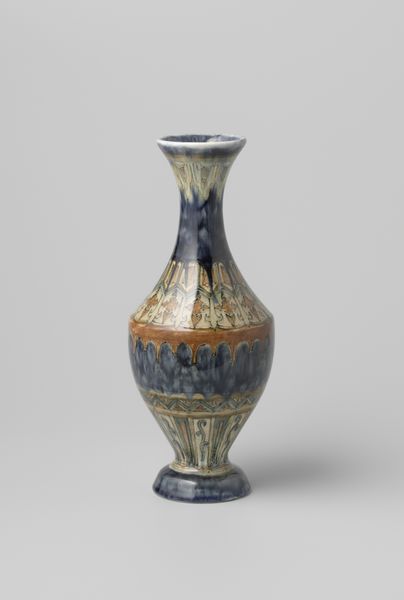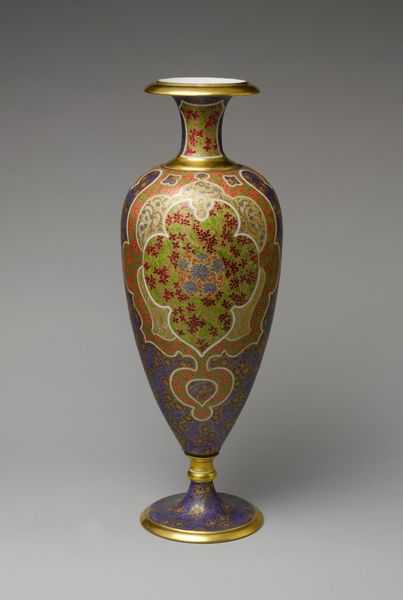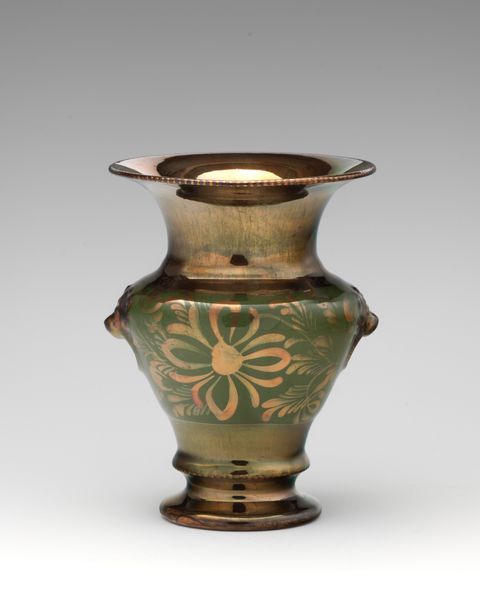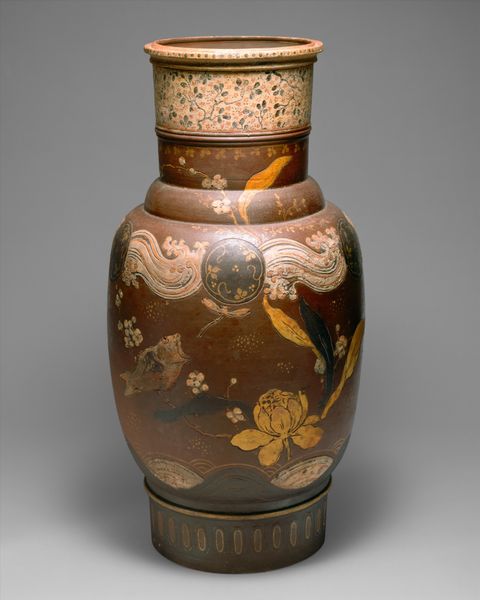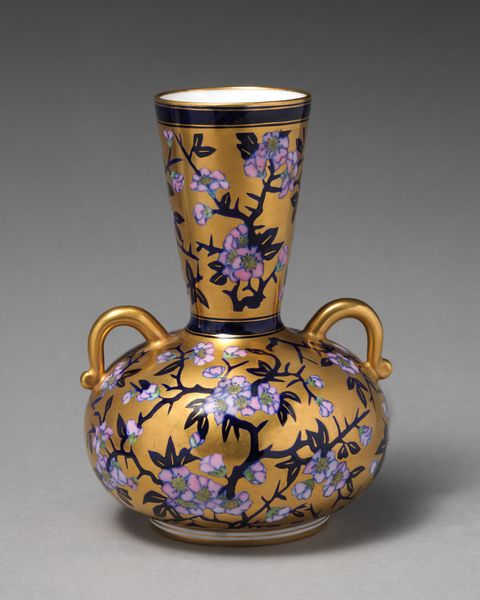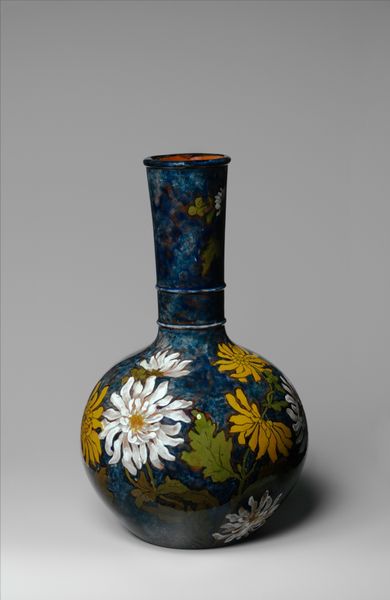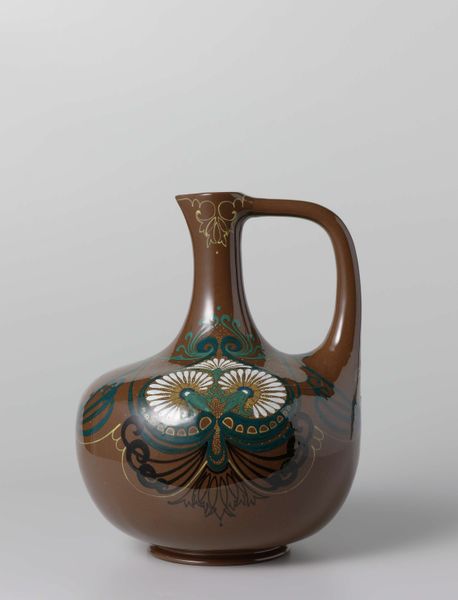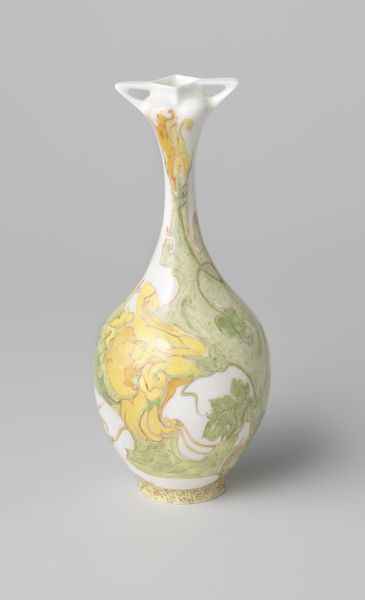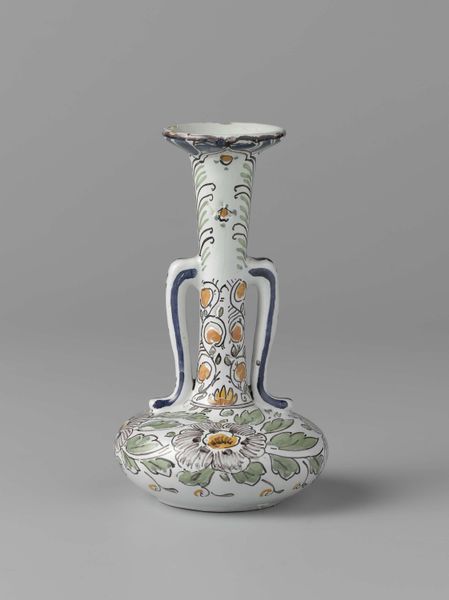
#
3d sculpting
#
circular oval feature
#
3d model
#
egg art
#
3d printed part
#
round design
#
stoneware
#
ceramic
#
metallic object render
#
united-states
#
round circular shape
Dimensions: H. 11 5/8 in.
Copyright: Public Domain
Curator: Well, hello there. Right now, we are standing in front of the work called "Vase with Bleeding Hearts" crafted sometime between 1872 and 1893 by John Bennett. Editor: It feels incredibly fragile, doesn't it? Almost as though a gentle breeze could shatter the whole piece, which strikes me considering how meticulously detailed it is. Curator: Interesting. Bleeding hearts often represent a kind of sentimental vulnerability or the pain of unrequited love. Do you think the artist intended for us to feel that delicate emotional state reflected in the vase itself? Editor: Absolutely. Stoneware offers an intriguing contrast. It speaks to durability, yet here it mimics a fragile bloom. I’m curious about the social context – who would own this? Was it purely decorative, or did it serve a function? That plays into our reading, right? The purpose it was meant to fulfill influences its intended message, after all. Curator: The bleeding heart, visually, is quite a potent symbol. In some traditions, the heart is seen as the seat of emotions, even of the soul. The depiction here makes the symbol quite literal, prompting us to meditate on love and loss in very visceral terms. I wonder, could it have served as a kind of memento mori, a reflection on the ephemeral nature of life and relationships? Editor: I'd imagine so. Also, it is interesting to look at the materiality: the subtle glaze, the controlled firing process to get that translucence… it speaks to immense labor. How much of this was industrial versus artisanal, do we know? Was this high art for the elite, or accessible décor? Understanding the means of its creation grounds our understanding of its social place. Curator: Precisely. Knowing who consumed art objects such as these allows for deeper cultural interpretations. Editor: Definitely. It forces us to think beyond sentimental readings and consider how objects like this intersected with class, taste, and the larger economy of art making in the late 19th century. It also emphasizes the importance of the crafts tradition. Curator: So, we’re left contemplating not just the vase’s visual poetry but its material history. Food for thought! Editor: Agreed, it changes my perception entirely, from simple craft to historical artifact.
Comments
No comments
Be the first to comment and join the conversation on the ultimate creative platform.
